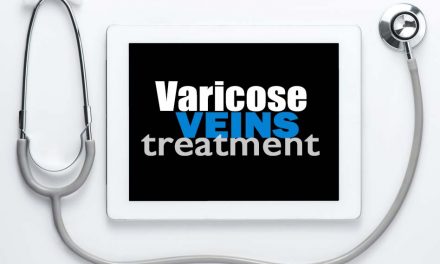
Varicose Vein Insurance Costs are Being Closely Reexamined – Breaking News

The Latest Trend in the Coverage of Varicose Veins
Recently, Medicare reexamined the costs associated with covering varicose vein care. Those costs have recently skyrocketed to nearly one billion dollars per year.
Like other Medicare costs, these increases are unsustainable.
After very short notice, Novitas, the company that suggests the coverage policy for Medicare in ten states – including Pennsylvania – held an open meeting on January 26, 2017.
The panel listened to a vein specialist defend continued coverage for all symptomatic varicose veins but made no decision.
They intend to stop Medicare coverage for varicose veins unless you have a skin ulcer or severe skin changes. Only the very worst and advanced varicose veins will be covered.
Panelists in the Medicare Evidence, Development and Coverage Advisory committee met on July 16, 2016 to examine the scientific evidence for treating varicose veins and venous insufficiency. They looked specifically at outcome improvements after treatment like pain reduction, improvement in swelling, and functional improvement.
Drs. Gloviczki and Dalsing, former presidents of the American Venous Forum, were disappointed that the committee’s analysis did not reflect the real-world experience. The score that the committee gave to varicose vein patients with symptoms indicated only an intermediate confidence in the treatment efficacy.
The advisory committee to Medicare also concluded that that ultrasound was not felt important for the diagnosis and treatment of venous disease.
That is absurd as any doctor knows who treats venous disease.
Therefore, Medicare is being advised by ivory tower bureaucrats out of touch of reality.
The Shock and Awe of Conservative Varicose Vein Treatment Coverage in Pittsburgh
A three-month trial of support stockings, exercise, avoiding immobilization, elevation, and NSAIDs (anti inflammatory medication) is required by most insurance companies before definitive varicose vein treatment can begin.
C’mon, let’s get real.
People aren’t going to do that.
People come to vein specialists to get their painful varicose veins fixed.
It is estimated that as many as fifty million Americans or 37% of the people in this country are sedentary and obese.
Are we going to discriminate against the majority of obese Americans if they have varicose veins?
Those same folks are offered artificial hips and knees after being forced to try injections first that ultimately fail as well.
Why force a trial of conservative management when the consensus of medical evidence in the United States and Great Britain’s guidelines supports the contrary opinion?
The United States Consensus panel consisted of the most respected vascular surgeons in the world including Drs. Gloviczki, Camerota, Dalsing, Eklof, Meissner, Pappas, and Wakefield and other giants of the vein world. It was entitled, The care of patients with varicose veins and associated chronic venous diseases: Clinical practice guidelines of the Society for Vascular Surgery and the American Venous Forum.
They did not support a trial of conservative medical management first for people with symptomatic varicose veins.
“Get them fixed first” – is supported by the scientific literature and by vein experts in both the United States and Great Britain.
Why You Should Get Your Varicose Veins Treated Now
Let’s break it down to the nuts and bolts.
Unfortunately, varicose veins always get worse over time.
Insurance coverage of these veins also gets worse over time.
Each health insurance company has different coverage rules!
The rules and regulations of what they will pay for are capricious and financially driven.
The citizens of Pittsburgh are caught in the cross-fire between battling insurance giants, Highmark and UPMC.
What You Must Understand About Your Health Insurance
You must know what your deductible and co-insurance is.
Co-insurance is not the co-pay that you pay at the front desk before you seek vein treatment.
Most people do not know this or understand it.
Ignorance of this leads to anger and frustration when it’s time for payment of services.
Just because it’s ” covered by insurance” doesn’t mean that you won’t have to pay additional healthcare costs.
Healthcare insurances purposely make it confusing when they sell you or your employer a plan.
They want to make the sale.
You must also understand that multiple procedures are often necessary when you have your varicose veins treated.
If you have a high deductible, and it has not been met, many of these varicose vein costs may become out-of-pocket.
So, does your insurance company really cover the cost of treating your varicose veins?
How Health Insurance Administrative Costs Affects Your Varicose Vein Care
Health insurance is highly competitive.
Their CEOs are paid outrageous salaries.
They are the highest paid executives in the country.
Their salaries come out of your premiums.
These healthcare insurance companies are bigger than U.S. Steel, Ford, and Wal-Mart. Their administrative and advertising costs are exorbitant.
You ultimately pay those costs when you or your employer purchase your health insurance.

“With so many UPMC workers’ families struggling to get by, it’s hard to hear the news that Mr. Romoff (UPMC CEO) makes more in a day and a half than I do in one year,” said Leslie Poston, a unit secretary at UPMC Presbyterian in Pittsburgh, who said her take-home pay after taxes is $16,900 per year. “Lots of people in Pittsburgh have trouble understanding how a charity can keep its workers in poverty, deny care to patients and still pay the CEO $6.4 million.”
A well-known health care CEO in Pittsburgh received $5.98 million in salary, bonuses and benefits in 2011.
That included $958,992 in base salary and $2.93 million in bonus and incentive compensation.
It’s the bonus and incentive part of their salary is what worries me the most.
Bonus and incentive for what?
Figuring out how to make more money, of course.
These company’s stock values are in the billions of dollars. Their advertisements are on our scoreboards at Heinz Field and PNC Park.
Their skyscrapers have their neon signs shining like a beacon from the tallest skyscrapers in Pittsburgh. Their ads are ubiquitous.
In such a highly competitive environment as this, people are often disappointed to find that their benefits are not what they imagined that they would be.
Considering all of these administrative costs, do you ever wonder why these companies name their individual plans after the most precious metals like platinum, gold, silver and bronze?
These precious metal names are a metaphor for of the incredible amount of money that they make from us buying them.
The never ending result – higher premiums and deductibles for you.
The Future of Varicose Vein Insurance Coverage
Insurance companies and Medicare are very seriously considering not covering varicose veins at all.
The recent meeting in Mechanicsburg, PA by the Medicare Advisory Committee representatives for Pennsylvania (and ten other states) is formulating its new varicose vein policy.
Medicare wants to no longer cover varicose veins unless the problem is in its most advanced stages.
Their idea is that unless you have serious complications already like a skin ulcer or severe skin damage from your varicose veins, your varicose vein treatments won’t be covered anymore.
It’s not an idle threat.
Commercial insurance companies soon follow Medicare’s coverage and reimbursement policies.
Doctors are very actively challenging this new more restrictive policy of varicose vein insurance coverage.
North Carolina Blue Cross/Blue Shield has restricted their coverage to one saphenous vein per leg during the lifetime of the policy holder.
You can think of varicose vein coverage in the future like chiropractic care. Some insurances cover chiropractors and some insurances don’t.
Is that good or bad?
“We shall see”, said the Zen master. That brings to light the following story.
Conclusion – We Shall See
A Zen master saw a young boy in his village receive a horse for his birthday.
The village proclaimed, “What a wonderful gift.”
“We shall see”, said the Zen master.
Months later the boy fell from the horse breaking his leg and crippling him for life.
“What a curse that horse was”, was heard from the villagers.
“We shall see’, said the Zen master.
Years later the country went to war but the boy could not be drafted because of his injury.
Many in the village now viewed the horse as a fortunate gift.
“We shall see”, said the Zen master.
With the trend of increasing deductibles and costs of insurance, the possibility of varicose veins not being covered at all may be neither a liability nor an asset.
We shall see.
Call us at 724-969-066 or click here to learn more.
At the present time, most insurance companies cover symptomatic varicose veins.
We accept and participate in most health insurance plans which include:
- Aetna
- Advantra
- Anthem/BCBS
- Cigna
- Coventry
- Devon
- 4Most
- Health America
- Health Assurance
- Health Plan of Upper Ohio Valley
- Humana
- Highmark/BCBS
- Medical Mutual
- Mon-Valley Health Plan
- Multi-Plan
- Tricare
- United Health Care
- Western Pennsylvania Electric (WPEE)
- UPMC
- All BC/BS plans









